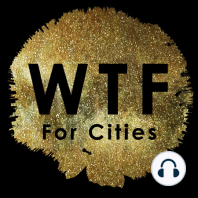9 min listen

043R_Shifting from sustainability to regeneration (research summary)
043R_Shifting from sustainability to regeneration (research summary)
ratings:
Length:
11 minutes
Released:
Mar 28, 2022
Format:
Podcast episode
Description
Summary of the article titled Shifting from sustainability to regeneration from 2007 by Bill Reed published in the Building Research & Information journal.
Since we are investigating the future of cities, I thought it would be interesting to see the difference between sustainability and regeneration in relation to the environment. This article investigates how the designers and stakeholders can create a whole system of mutually beneficial relationships thus moving beyond sustaining the environment to regenerate its health as well as our own.
You can find the article through this link.
Abstract: Sustainability, as currently practised in the built environment, is primarily an exercise in efficiency. In other words, the use of environmental rating systems and other mechanisms allows a reduction in the damage caused by excessive resource use. However, instead of doing less damage to the environment, it is necessary to learn how one can participate with the environment by using the health of ecological systems as a basis for design. The shift from a fragmented to a whole systems model is the significant cultural leap that consumer society needs to make – through framing and understanding living system interrelationships in an integrated way. A place-based approach is one way to achieve this understanding. The design process begins by attempting to understand how the systems of life work in each unique place. The role of designers and stakeholders is to create a whole system of mutually beneficial relationships. By doing so, the potential for green design moves beyond sustaining the environment to one that can regenerate its health – as well as our own.
You can find the transcript through this link.
What wast the most interesting part for you? What questions did arise for you? Let me know on twitter @WTF4Cities!
I hope this was an interesting episode for you and thanks for tuning in.
Music by Lesfm from Pixabay
Since we are investigating the future of cities, I thought it would be interesting to see the difference between sustainability and regeneration in relation to the environment. This article investigates how the designers and stakeholders can create a whole system of mutually beneficial relationships thus moving beyond sustaining the environment to regenerate its health as well as our own.
You can find the article through this link.
Abstract: Sustainability, as currently practised in the built environment, is primarily an exercise in efficiency. In other words, the use of environmental rating systems and other mechanisms allows a reduction in the damage caused by excessive resource use. However, instead of doing less damage to the environment, it is necessary to learn how one can participate with the environment by using the health of ecological systems as a basis for design. The shift from a fragmented to a whole systems model is the significant cultural leap that consumer society needs to make – through framing and understanding living system interrelationships in an integrated way. A place-based approach is one way to achieve this understanding. The design process begins by attempting to understand how the systems of life work in each unique place. The role of designers and stakeholders is to create a whole system of mutually beneficial relationships. By doing so, the potential for green design moves beyond sustaining the environment to one that can regenerate its health – as well as our own.
You can find the transcript through this link.
What wast the most interesting part for you? What questions did arise for you? Let me know on twitter @WTF4Cities!
I hope this was an interesting episode for you and thanks for tuning in.
Music by Lesfm from Pixabay
Released:
Mar 28, 2022
Format:
Podcast episode
Titles in the series (100)
004R_Will the real smart city please stand up? Intelligent, progressive or entrepreneurial? (research summary) by What is The Future for Cities?